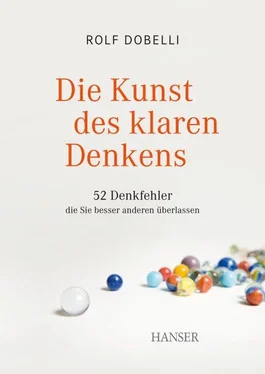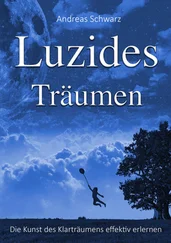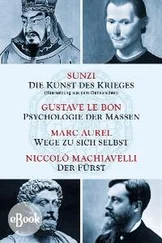Rolf Dobelli - Die Kunst des klaren Denkens
Здесь есть возможность читать онлайн «Rolf Dobelli - Die Kunst des klaren Denkens» весь текст электронной книги совершенно бесплатно (целиком полную версию без сокращений). В некоторых случаях можно слушать аудио, скачать через торрент в формате fb2 и присутствует краткое содержание. Год выпуска: 2011, Издательство: Carl Hanser Verlag, Жанр: Психология, на немецком языке. Описание произведения, (предисловие) а так же отзывы посетителей доступны на портале библиотеки ЛибКат.
- Название:Die Kunst des klaren Denkens
- Автор:
- Издательство:Carl Hanser Verlag
- Жанр:
- Год:2011
- ISBN:нет данных
- Рейтинг книги:4 / 5. Голосов: 1
-
Избранное:Добавить в избранное
- Отзывы:
-
Ваша оценка:
- 80
- 1
- 2
- 3
- 4
- 5
Die Kunst des klaren Denkens: краткое содержание, описание и аннотация
Предлагаем к чтению аннотацию, описание, краткое содержание или предисловие (зависит от того, что написал сам автор книги «Die Kunst des klaren Denkens»). Если вы не нашли необходимую информацию о книге — напишите в комментариях, мы постараемся отыскать её.
Die Kunst des klaren Denkens — читать онлайн бесплатно полную книгу (весь текст) целиком
Ниже представлен текст книги, разбитый по страницам. Система сохранения места последней прочитанной страницы, позволяет с удобством читать онлайн бесплатно книгу «Die Kunst des klaren Denkens», без необходимости каждый раз заново искать на чём Вы остановились. Поставьте закладку, и сможете в любой момент перейти на страницу, на которой закончили чтение.
Интервал:
Закладка:
»A loss has about two and a half times the impact of a gain of the same magnitude.« (Ferguson, Niall: The Ascent of Money – A Financial History of the World , Penguin Press, 2008, S. 345)
»Losing ten dollars is perceived as a more extreme outcome than gaining ten dollars. In a sense, you know you will be more unhappy about losing ten dollars than you would be happy about winning the same amount, and so you refuse, even through a statistician or accountant would approve of taking the bet.« (Baumeister, Roy F.: The Cultural Animal: Human Nature, Meaning, and Social Life , Oxford University Press, 2005, S. 319 ff.)
Je mehr Arbeit wir für etwas investieren, desto stärker das Gefühl des Besitzes. Das wird auch IKEA-Effekt genannt.
IKEA Effect, siehe Dan Arielys Website: http://danariely.com/tag/ikea- effect/
Das Wunder
Die Geschichte mit der Explosion der Kirche in: Nichols, Luke: »Church explosion 60 years ago not forgotten«, Beatrice Daily Sun , 1. März 2010.
Siehe auch: Plous, Scott: The Psychology of Judgment and Decision Making , McGraw-Hill, 1993, S. 164.
Für eine gute Diskussion um Wunder, siehe: Bevelin, Peter: Seeking Wisdom. From Darwin to Munger , Post Scriptum, 2003, S. 145.
Groupthink
Janis, Irving L.: Groupthink: Psychological Studies of Policy Decisions and Fiascoes, Cengage Learning, 1982.
Wilcox, Clifton: Groupthink , Xlibris Corporation, 2010.
Eine Art Gegenteil von Groupthink ist Schwarmintelligenz (Surowiecki, James: The Wisdom of the Crowds , Doubleday, 2004). Und das geht so: »Die große Masse von durchschnittlichen Menschen (also kein Pool von Fachleuten) findet of erstaunlich richtige Lösungen – sie liegen allerdings auch mal grotesk daneben. Das hat schon Francis Galson [1907] in einem hübschen Experiment nachgewiesen: Er besuchte eine Viehausstellung, bei der ein Wettbewerb veranstaltet wurde, um das Gewicht eines Ochsen zu schätzen. Galton war der Meinung, dass die Messebesucher dazu nicht in der Lage seien, und beschloss, die fast 800 Schätzungen statistisch auszuwerten. Der Mittelwert aller Schätzungen (1.197 Pfund) kam aber dem tatsächlichen Gewicht des Ochsen (1.207 Pfund) erstaunlich nahe – Galtons Vorurteil war somit widerlegt.« (Jürgen Beetz: Denken, Nach-Denken, Handeln: Triviale Einsichten, die niemand befolgt , Alibri, 2010, S. 122)
Groupthink kommt zustande bei Interaktion der Teilnehmer. Schwarmintelligenz hingegen, wenn die Akteure unabhängig voneinander handeln (zum Beispiel eine Schätzung abgeben) – was immer seltener der Fall ist. Schwarmintelligenz ist kaum wissenschaftlich replizierbar.
The Neglect of Probability
Monat, Alan; Averill, James R.; Lazarus, Richard S.: »Anticipatory stress and coping reactions under various conditions of uncertainty«, Journal of Personality and Social Psychology 24 (2), November 1972, S. 237–253.
»Probabilities constitute a major human blind spot and hence a major focus for simplistic thought. Reality (especially social reality) is essentially probabilistic, but human thought prefers to treat it in simple, black-and-white categories.« (Baumeister, Roy F.: The Cultural Animal: Human Nature, Meaning, and Social Life , Oxford University Press, 2005, S. 206)
Weil wir kein intuitives Verständnis für Wahrscheinlichkeiten haben, haben wir auch kein intuitives Verständnis für Risiko. So braucht es immer wieder Börsencrashs, um unsichtbare Risiken sichtbar zu machen. Es hat erstaunlich lange gedauert, bis die Ökonomen dies verstanden haben. Siehe: Bernstein, Peter L.: Against the Gods, The Remarkable Story of Risk , Wiley, 1996, S. 247 ff.
Was viele Ökonomen und Anleger allerdings noch nicht begriffen haben: Volatilität ist ein schlechtes Maß für Risiko. Und doch verwenden sie es in ihren Bewertungsmodellen. »How can professors spread this nonsense that a stock’s volatility is a measure of risk? I’ve been waiting for this craziness to end for decades.« (Munger, Charles T.: Poor Charlie’s Almanack , Third Edition, Donning, 2008, S. 101)
Für eine komplette Diskussion, wie (falsch) wir Risiko wahrnehmen: Slovic, Paul: The Perception of Risk , Earthscan, 2000.
The Zero-Risk Bias
Rottenstreich, Y.; Hsee, C. K.: »Money, kisses, and electric shocks: on the affective psychology of risk«, Psychological Science 12, 2001, S. 185–190.
Siehe auch: Slovic, Paul et al.: »The Affect Heuristic«, in: Gilovich, Thomas; Griffin, Dale; Kahneman, Daniel: Heuristics and Biases , Cambridge University Press, 2002, S. 409.
An example is the Delaney clause of the Food and Drug Act of 1958, which stipulated a total ban on synthetic carcinogenic food additives.
Der Knappheitsirrtum
Cialdini, Robert B.: Influence: The Psychology of Persuasion , Collins, paperback edition, 2007, S. 237 ff.
Zu den Keksen, siehe: Worchel, Stephen; Lee, Jerry; Adewole, Akanbi: »Effects of supply and demand on ratings of object value«, Journal of Personality and Social Psychology 32 (5), November 1975, S. 906–991.
Zu den Postern, siehe: Baumeister, Roy F.: The Cultural Animal: Human Nature, Meaning, and Social Life , Oxford University Press, 2005, S. 102.
The Base-Rate Neglect
Das Beispiel mit dem Mozart-Fan, siehe: Baumeister, Roy F.: The Cultural Animal: Human Nature, Meaning, and Social Life , Oxford University Press, 2005, S. 206 f.
Kahneman, Daniel; Tversky, Amos: »On the psychology of prediction«, Psychological Review 80, 1973, S. 237–251.
Siehe auch: Gigerenzer, Gerd: Das Einmaleins der Skepsis. Über den richtigen Umgang mit Zahlen und Risiken , 2002.
Siehe auch: Plous, Scott: The Psychology of Judgment and Decision Making , McGraw-Hill, 1993, S. 115 ff.
Der Spielerfehlschluss
Der Spielerfehlschluss wird auch Monte-Carlo-Fehlschluss genannt. Das Beispiel von 1913 ist hier enthalten: Lehrer, Jonah: How We Decide , Houghton Mifflin Harcourt, 2009, S. 66.
Das Beispiel der IQs: Plous, Scott: The Psychology of Judgment and Decision Making, McGraw-Hill, 1993, S. 113.
Siehe auch: Gilovich, Thomas; Vallone, Robert; Tversky, Amos: »The Hot Hand in Basketball: On the Misperception of Random Sequences«, in: Gilovich, Thomas; Griffin, Dale; Kahneman, Daniel: Heuristics and Biases , Cambridge University Press, 2002, S. 601 ff.
Der Anker
Zu den Sozialversicherungsnummern und dem Glücksrad, siehe: Ariely, Dan: Pedictibly Irrational , HarperCollins, 2008, Chapter 2. Siehe auch: Tversky, Amos; Kahneman, Daniel: »Judgment under Uncertainty: Heuristics and Biases«, Science 185, 1974, S. 1124–1131.
Das Beispiel mit Luther in modifizierter Form, siehe: Epley, Nicholas; Gilovich, Thomas: »Putting Adjustment Back in the Anchoring and Adjustment Heuristic«, in: Gilovich, Thomas; Griffin, Dale; Kahneman, Daniel: Heuristics and Biases , Cambridge University Press, 2002, S. 139 ff.
Nochmals leicht modifiziert in: Frey, Ulrich; Frey, Johannes: Fallstricke , Beck, 2009, S. 40.
Zu Attila, siehe: Russo, J. E.; Shoemaker, P. J. H: Decision Traps , Simon & Schuster, 1989, S. 6.
Zur Preisschätzung der Häuser, siehe: Northcraft, Gregory B.; Neale, Margaret A.: »Experts, Amateurs, and Real Estate: An Anchoring-and-Adjustment Perspective on Property Pricing Decisions«, Organizational Behavior and Human Decision Processes 39, 1987, S. 84–97.
Anchoring in Verhandlungs- und Verkaufssituationen, siehe: Ritov, Ilana: »Anchoring in a simulated competitive market negotiation« Organizational Behavior and Human Decision Processes 67, 1996, 16–25. Reprinted in: Bazerman, M. H. (Hrsg.): Negotiation, Decision Making, and Conflict Resolution , Vol. 2, Edward Elgar Publishers, 2005.
Читать дальшеИнтервал:
Закладка:
Похожие книги на «Die Kunst des klaren Denkens»
Представляем Вашему вниманию похожие книги на «Die Kunst des klaren Denkens» списком для выбора. Мы отобрали схожую по названию и смыслу литературу в надежде предоставить читателям больше вариантов отыскать новые, интересные, ещё непрочитанные произведения.
Обсуждение, отзывы о книге «Die Kunst des klaren Denkens» и просто собственные мнения читателей. Оставьте ваши комментарии, напишите, что Вы думаете о произведении, его смысле или главных героях. Укажите что конкретно понравилось, а что нет, и почему Вы так считаете.












